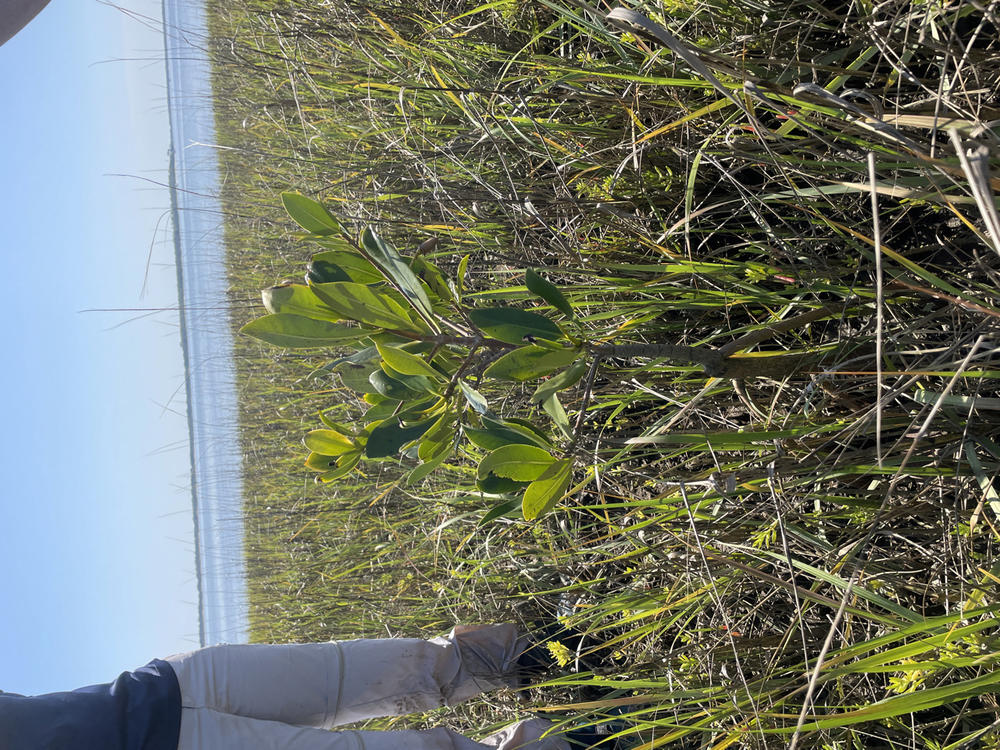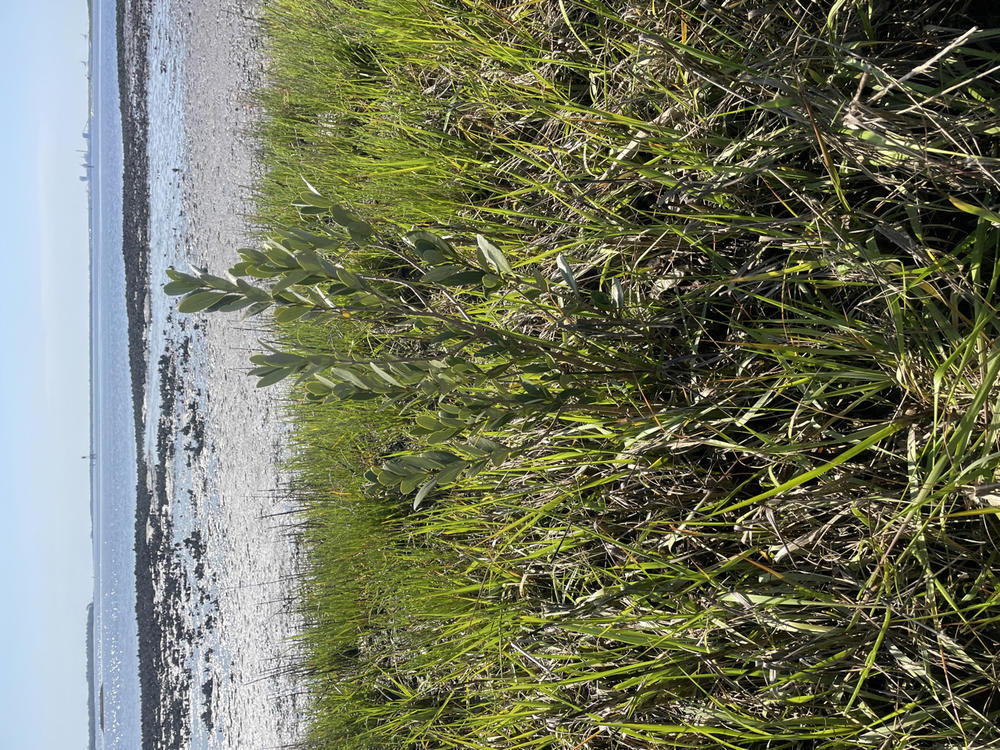
Caption
A red mangrove tree was discovered near Georgia's Cumberland Island.
Credit: Chas Vervaeke / National Park Service

A red mangrove tree was discovered near Georgia's Cumberland Island.
As the global climate warms, Georgia is seeing more plant and animal species that normally live somewhere else.
The newest scientifically confirmed climate migrators in our state are mangrove trees.
The tropical plants thrive in warm, shallow waters.
In the U.S., they’re more associated with places like Hawaii and Puerto Rico.
Their previous northernmost documented location on the Atlantic coast was just north of the St. John’s River in Florida.
But earlier this year, three biologists, including Chas Vervaeke, a Jacksonville-based coastal ecologist with the National Park Service, found several of them just north of the St. Marys River, which separates Georgia from Florida.
“All of us had the same reaction,” he said. “We were like ‘Holy cow, there are mangroves in Georgia.’”
He and his colleagues, Scott Jones, an assistant professor of biology at University of North Florida, and Candy Feller, an ecologist with the Smithsonian Institution, found both red and black mangroves near Cumberland Island and Kings Bay.
He said the discovery excited them because of its contribution to science and the opportunity to educate people about climate change.
“[Mangroves] are up here because our winters are less severe and we’re having less severe freezes,” he said.

A black mangrove tree was discovered near Kings Bay, Ga.
Georgia winters are an average of three degrees warmer since 1970, according to Climate Central.
The mangroves’ seeds were probably swept north by increasingly numerous and strong tropical storms, Vervaeke said.
But they aren’t in large stands like in South Florida. In fact, the Georgia trees are more like small, individual shrubs and hard to find unless you’re really looking for them.
“You’re not going to have that same type of growth,” he said. “Whether they’re going to form stands is still up for debate.”
The biologists’ trip north of the St. Marys River was prompted by a journalist reporting on the trees’ migration for Scientific American.